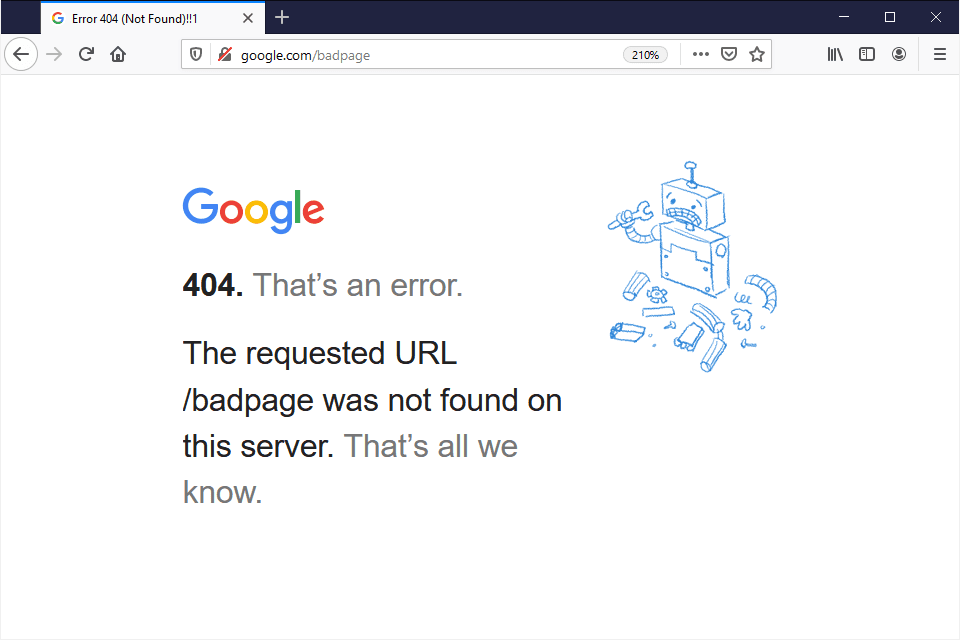As a business owner with a digital presence, you already know the important role that Search Engine Optimization (SEO) plays in your overall marketing strategy. Most likely, the goal of every business owner is to rank high on Search Engine Results Pages (SERPs) and, ideally, this would mean appearing on the first page for your targeted keywords. To accomplish this, you need to implement effective SEO strategies. To that end, building a website is no longer enough: you have to optimize that website for traffic. This is what the right SEO strategies can help you achieve. However, you may feel overwhelmed by the many action points in your strategy or you may be confused about how to build a strategy that actually works. Link building is one of the easiest and most effective SEO strategies for getting you real-time results. If done correctly, you can begin optimizing your site for search engines through link building. In this post, we’ll explore just how you can do that and how the right links can help your site move up the ranks on SERPs.
What is link building and why does it matter?
Link building refers to the process of getting other websites to direct users and visitors to a page on your site with the aim of moving your website up the rank on SERPs. We have no doubt this is an essential SEO strategy that allows your website to acquire mentions on authoritative websites in your niche, thereby increasing its value in the eyes of search engines. When it comes to ranking better on Search Engine Results Pages (SERPs), link building is a solid part of your overall SEO arsenal. Implementing the right link-building strategies can 10x your marketing efforts, this is because link-building is one of the major factors that search engines consider when determining rankings. Search engine bots take count of the number of backlinks your website has and the quality of those links to decide what position your site should get on the results page. It’s an established fact that websites that appear on the first page of Google’s SERPs have 3.8 times more backlinks [1] than those that appear on pages 2-10. If the links are quality links from authoritative sites, the website that they link to goes even higher up on the result pages. Link building is also a customer acquisition technique that works to direct new visitors to your site: it’s very likely that people reading content on a site that links back to your website will naturally follow that link to check out your content. These people are often your target audience who may already be looking for what you offer. By working on your link-building strategies, you can easily direct your ideal customers to your offerings. This will in turn increase your traffic and conversions. On top of this, link-building can help you build trust. Visitors who find your website on other sites will see you as an authority or the appropriate vendor for what they are looking for. In this way, link-building can work as an endorsement of your offering. When it comes to developing your link-building strategies, however, it all boils down to quality over quantity and knowing the exact techniques that will reposition your business on search engines. Intrigued? If this sounds exactly like what you need right now then keep reading, we’ll delve into what you should know about building the right links for your site.
What goes into a solid link-building strategy?
Having a solid link-building strategy can earn recognition for your site in a way that makes your SEO efforts successful. While there are many techniques that could be useful for you, we have outlined some of the important ones that should go into your link-building strategy. In order to keep things simple, we believe the main aspects you should look for are: understanding inbound links, ensuring you use quality links, finding broken links, finding the balance between follow and no follow links, giving organic link-building a try, taking the time for internal link-building, and understanding the value of manual link-building. We will go over all of these to make sure you leave this guide with a clear understanding of what your ideal link-building strategy should look like.

What are inbound links?
There are three main types of links you can focus on in your link-building strategy: internal links, outbound links, and inbound links. Inbound links often get the priority stake in a link-building strategy. They are links coming from another website to yours. Inbound links are important for SEO because they tell search engines that your website is an authority in your niche or on a particular subject matter. They need to come from an authoritative source for search engines to regard them as valuable. The website linking to yours has to be an authority on the subject itself to make any link they give you appear solid to search engines.
Quality links
A quality link is one that comes from a high-quality website, ideally an authority site. Such a website should be driving consistent monthly traffic and should have content that is valuable and informative. You should ensure that the website ranks high for your targeted keywords as you want them to be relevant to your niche. When you obtain a link on a website that meets these criteria, it would be a quality link. The fact that the source website for your link is an authority doesn’t preclude you from providing valuable content yourself. It is your own content that will ultimately make search engines consider your backlink favorably enough to improve your ranking.
Should you buy quality links?
The most common ways to obtain quality links are through white-hat link-building strategies like outreach and guest posting. “White hat” is a very common term in SEO, it is used in reference to practices that are complying with Google’s guidelines and is overall used for SEO-friendly practices, such as a good user experience with valuable online content. Using a white-hat approach is about finding links through authoritative, trustworthy, websites that are following Google’s guidelines. You can do this by reaching out to reputable webmasters, whose websites have similar content to yours, and asking if they could link back to your site. This is known as outreach link-building. Your other option is to write guest posts, which means writing valuable content that will be uploaded to someone else’s blog to get the word out about you. That way, you will be trying to reach a new, wider audience. However effective these methods might be, they will take time to yield the results that you want. As such, backlink buying is beginning to gain some popularity and you might be tempted to follow this easy route. However, Google frowns at this practice and link buying can often lead to an accumulation of low-quality links. You could get penalized [2] in the end if your link-buying efforts only obtain low-quality links for your site. That is why we recommend you follow the best course of action by searching for high-quality and reputable websites or by adhering to the white hat, outreach, and guest posting strategies.
Broken link building
Broken link-building is stated to be the fifth most widely used [3] link-building tactic. With such a level of popularity, you can hardly go wrong with adding broken link-building to your strategy. Here, we’ll explain what a broken link is and how you can go about finding these kinds of links to add to your link-building strategy.
What is a broken link?
A broken link is a link that no longer leads anywhere or that leads to a dead web page. This could be due to any number of reasons such as the owner of the page having removed the content. If the site owner replaces the content with something more relevant which has a new URL, the page could become dead. The source website for the link may be unaware of the changes, causing the link to direct users to the dead page. They may also be unaware that the link leads to nowhere. It might not be so apparent, but this unfortunate scenario for site owners could be a great opportunity for you: it’s your chance to find these broken links and add them to your link-building arsenal.
This is how you find broken links
A broken link is also called a dead link and oftentimes it leads to a page that has been deleted. Broken link building has to do with finding these links that lead to dead pages and asking the owner of the source website to swap them for links to your content. Before approaching the site owner, you should first prepare relevant content on the subject that would be useful for the source website to link to. Once they swap the dead page with your content, visitors will be directed to the relevant page on your site. Does it sound easy? It definitely can be, but there are a few things you need to know first. To begin with, you need to understand how to find these broken links in the first place. Here are some ways you can do just that:
- Look for dead pages on your competitor’s websites and find the backlinks in them.
To do this, you have to check their content. Click on any links you find and see if they lead to a 404 page or a page with another error message.
- Do a web search
While searching for broken links on your competitors’ sites can earn you legitimate links, you will be limited to just a handful of them. Doing a web search on your topic of interest will provide you with a lot more content that has backlinks in them. You can then check these backlinks to see which ones lead to a dead page. You could go straight to Google to do this but you would be better off using tools designed for this such as Ahref’s Content Explorer, which we have used to keep up with our clients’ link-building strategies.
- Find broken links on resource pages
Resource pages create content on particular topics and then link this content to useful resources. However, they rarely get updated. As a result, they are a great source of broken links.
Broken link example
Broken links typically return an error message when a user tries to access them. Some examples of broken link error code include “404 page not found”, “400 bad request”, “bad URL”, “timeout”, “empty”, “reset”, and more. The server usually returns these messages to show that the link has malfunctioned. The only option for the web visitor would be to return to the previous page.

(Source: https://www.lifewire.com/404-not-found-error-explained-2622936)
Dofollow vs Nofollow links
Moving on to the last piece of your link-building strategy we have a special type of backlink. Your backlinks can either be dofollow links or nofollow links. A dofollow link is used by search engines to crawl and index your website or webpage, they also pass the PageRank authority of the origin site to the destination site. As such, they help with search engine optimization (SEO). The default type of backlinks in most website HTML editors is dofollow links. As such, no coding is required. Content that could obtain a dofollow link includes guest posts, editorial content, press releases, reviews, resource pages, and testimonials. Nofollow links, on the other hand, do not point the website to search engines for indexing and crawling. They do not pass PageRank value to the destination site or webpage for SEO. Nofollow links are used by publishers to tell search engines that certain links should not go into ranking the webpage in SERPs. These links are used mainly for sources that are not from trustworthy sites in which case publishers do not want the authority of the origin site to affect the positioning of the destination site or webpage. Other kinds of content that receive the nofollow link tag include sponsored links, links that are paid for, or user-generated links. The difference between these two kinds of links lies mainly in the fact that you want search engine crawlers to only index links that are from credible sources against your site. This is one way to avoid being penalized by search engine algorithms. Similarly, if a nofollow link is wrongly marked as a dofollow link, you risk your site getting penalized [4] by search engines. A healthy link profile will contain both dofollow and nofollow links. While there are no specifics as to the quantity of nofollow or dofollow links that should be in your backlink profile, Alexa Rank (the global ranking system) has found the most common ratio to be 25/75 [5] for nofollow and dofollow links respectively. Highly ranked websites typically have more dofollow links than nofollow links in their strategy. A diversified profile like that will make search engines trust you more, thereby improving your overall link-building results. You will also avoid getting penalized and de-ranked for wrong link profiling. Taking these initiatives will keep your website SEO healthy.
Organic link building
Organic backlinks are acquired when a source website links back to yours without informing you first. Since they do not reach out to you about wanting to hyperlink your site or webpage, the possibility of trying to influence search engines’ ranking is ruled out, making this a very authentic type of backlink. Organic links do not work well with the whole idea of link building because the latter requires you to perform outreaches as a way to obtain backlinks. To reconcile this, there is something called organic link building through which you can utilize white hat strategies to obtain organic links and be on the safe side of Google’s guidelines.
What are organic links?
Organic links are links acquired naturally without an agreement between the origin site and the destination site. Such links are given because the content that they link to is valuable. Organic links remove the attempt to try to influence search engines ranking in favour of the receiving site. When you produce valuable content on a consistent basis, you will inevitably acquire organic backlinks from other websites that find your content useful for their audiences.
Internal link building
Internal link building is a technique for passing the link value of one page on your website to another. An internal link is a link on a page of your site that leads to a different and often related page on your site. These links help your site visitors and search engines find relevant pages and content on your website. Search engines use internal links to navigate your site and determine which pages have more relevance for SEO purposes. The more internal links a page has, the more important that page is over others to search engines. Using this link value, search engine algorithms will rank such a page higher on SERPs over your other similar content. Internal link building involves you determining which pages on your website are more important for ranking purposes and linking to these pages in similar content. Your homepage often has the highest link value and it shares this value with other pages that it links to, which in turn can share with any pages or content linked within them. If you linked your recent posts on your homepage and in your category pages, these posts will rise in link value and end up ranking better on SERPs, thereby boosting SEO for them. They will be more likely to show up in SERPs when searchers input search queries related to them. Internal linking can be used to give your site a structure and to create a hierarchy between pages by linking to the more important pages or content. Similarly, you can use contextual linking in your internal link-building strategy to show users and search engines other interesting and related content. You do this by taking your main content and adding links to your previously published content, that way you will be sharing link value with them.
Is manual link-building a good idea?
There are two ways to go about your link-building efforts. You can decide to use automated tools or you can build links to your website manually. Manual link building involves methods that you can control such as guest posting, testimonials, influencer networking, and so on. With manual link building, you have to be actively involved in the process of acquiring links to your site. Manual link-building can help you take control of the process to ensure that you are only receiving links from high-quality sites that would not hurt your site’s SEO in the long run. Manual link building might seem tedious but it can help you ensure that you are acquiring links in a way that looks natural to search engines and do not appear spammy. We will not lie to you, though, this process will take time and effort, but the results will make it all worth it in the end. Trust us, that is how we have managed to improve our clients’ online presence over the years and ensure their position on Google’s top organic searches.
Link building tools
If you do not have the patience to build links to your website manually, you may want to consider using link-building tools. These are automated tools that take charge of the task of acquiring links. They would help you place comments automatically on other sites and organize your links throughout your site, ensuring that you have both internal and inbound links. Although this might sound like a great idea, and we don’t entirely rule it out, there is a downside that is worth mentioning: if you decide to use these tools, you will have little to no control over the process. If you have made it all the way to the end then by now you must have a beginner’s understanding of what a link-building strategy entails, congrats! It is now time to decide what you’ll do with this knowledge. If you think you can start to implement our useful tips on your own then we have your back. Go for it! It could be rewarding to see just how much you can accomplish when you set your mind to it and dedicate the necessary time. However, we know firsthand how time-consuming and difficult this can be. If a successful and comprehensive link-building strategy is exactly what you are looking for but you don’t really have the time to do it yourself, allow us to give you a hand. Here at Nomadic Advertising, we are a successful and highly skilled digital marketing agency that can create a tailor-made strategy to tackle every aspect of your business’s online presence. From social media management, website building and design, a well-curated SEO strategy all the way up to a specifically made link-building strategy that will cover all the basic bases we have discussed so far, and much more. You can visit our website to see all the services we offer and how exactly we have been helping our clients thrive in the online space for years. You can also contact us to claim your FREE 30-minute strategy where we can delve into your company, what you are looking for, and how exactly can we meet your needs. Link-building is definitely a process that will require a wide range of knowledge and expertise, but we can assure you the results will come with a boost to your online presence and your position on search engines, among many other benefits. So reach out to us and see for yourself everything we can accomplish, together.
Key takeaways
- Link building refers to the process of getting other websites to direct users and visitors to a page on your site with the aim of moving your website up the rank on SERPs.
- Search engine bots take count of the number of backlinks your website has and the quality of those links to decide what position your site should get on the results page. If the links are quality links from authoritative sites, the website that they link to goes even higher up on the result pages.
- Link building is also a customer acquisition technique that works to direct new visitors to your site: by adding a link to your website in a relevant and calculated way, you will gain new followers and leads.
- Your link-building strategy should understand inbound links, ensure you use quality links, find broken links, find the balance between follow and no follow links, give organic link-building a try, take the time for internal link-building, and understand the value of manual link-building.
- Inbound links are links coming from another website to yours and are directly related to your website’s authority on SERPs.
- Quality links come from a high-quality website, ideally an authoritative site.
- To obtain quality links and avoid being penalized by Google, we recommend you stick to white-hat link-building tactics such as outreach and guest postings. This will be more effective than you can imagine.
- You can also add a broken links approach. A broken link is a link that no longer leads anywhere or that leads to a dead web page. You could find these broken links and use them to your benefit by approaching the site owner and providing useful content to replace that dead link. That will be mutually advantageous. You can find broken links by looking them up on the internet, doing a web search, and using resource pages.
- A dofollow link is used by search engines to crawl and index your website or webpage.
- Nofollow links are used by publishers to tell search engines that certain links should not go into ranking the webpage in SERPs.
- A healthy link profile will contain both dofollow and nofollow links, but you have to learn how to use them to your advantage.
- Organic backlinks are acquired when a source website links back to yours without informing you first. It is very authentic.
- Internal link building is a technique for passing the link value of one page on your website to another. They help your site visitors and search engines find relevant pages and content on your website. The more internal links a page has, the more important that page is over others to search engines, thereby having a higher ranking.
- Manual link-building can help you take control of the process to ensure that you are only receiving links from high-quality sites that would not hurt your site’s SEO in the long run.
References
1) Backlinko: https://backlinko.com/search-engine-ranking
2) Google search central: https://developers.google.com/search/docs/essentials/spam-policies?visit_id=638038907860565497-17582999&rd=1#link-spam
3) https://ahrefs.com/blog/broken-link-building/#:~:text=broken%20link%20building-,What%20is%20broken%20link%20building%3F,visitors%20to%20a%20dead%20resource.
4) Search Engine Journal: https://www.searchenginejournal.com/guest-post-manual-actions/351692/
5) SEO chatter: https://seochatter.com/dofollow-vs-nofollow-links-difference/





